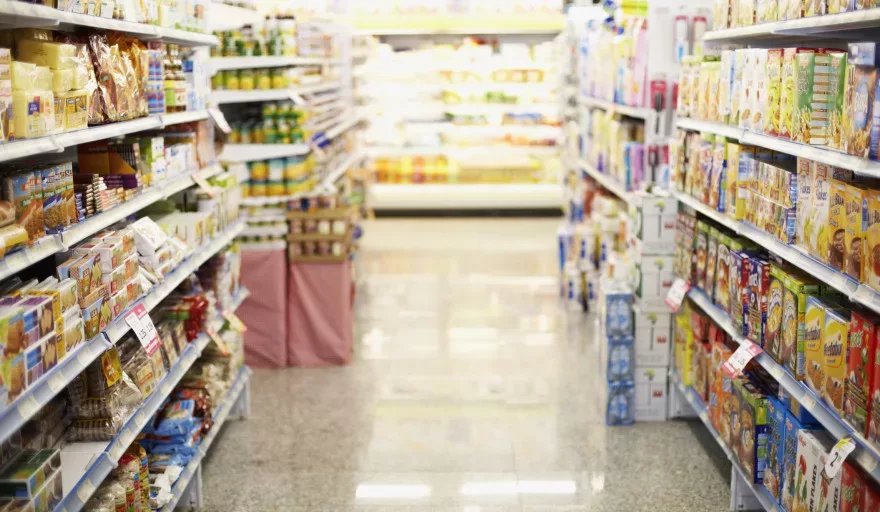As discount chains knock spots off Sainsbury’s, Tesco, Asda, and Morrisons in the UK, grocers in Europe and further afield are suffering too. Observer writers check out shopping struggles from Berlin to Beijing.
As they scramble to maintain market share, the big four British grocers can take comfort from the fact that at least they are not alone. The global supermarket industry has its share of epic competitive scraps, too. In Europe alone, the discounters that have wrought havoc for Tesco, Morrisons, Asda and Sainsbury’s have an even more powerful grip on the industry.
While Aldi and Lidl control around 8% of the UK market, according to figures from market research group Kantar the share controlled by discounters in France is 10% and in Germany – home of Aldi and Lidl – it is 37%. In the UK, two-thirds of the market is controlled by four players; this is the same as in Germany, while in France 56% of the market is controlled by the top four and in Spain just under 50%. A look at these markets, plus some of the biggest outside Europe, shows that every territory poses challenges for big grocers.
Germany – By Philip Oltermann
The British story of stellar growth for discounters and pain inflicted on established chains is well-known in Germany. “German supermarkets fought that same battle two decades ago”, said Matthias Queck, a Frankfurt-based analyst for Planet Retail.
It was a skirmish the traditional chains fought with limited success: Aldi and Lidl nowadays have nearly 40% of the market. “What we’re seeing in Britain may just be the pangs of a market adjusting its prices and the power balance between supermarkets and discounters to what we are used to seeing in continental Europe,” he added.
But while “quality” supermarkets such as Edeka and Rewe may still be smarting, they are travelling in a very different direction from the one chosen by their British equivalents. “If anything, they have for the past few years been trying to shake off the cheap, ‘discount’ image and convince customers that paying a little bit extra is worth it,” said Queck.
As in the UK, discounters and supermarkets in Germany are faced with shoppers who are less and less willing to drive out of town for their weekly shop, and more likely to do small, frequent trips in urban areas. In recent years, the trend has led to a revival in big cities like Hamburg and Berlin of the traditional Tante Emma Läden or corner shops, which have been able to be much more flexible in reacting to trends or food scandals than their bigger rivals.
France – By Kim Willsher
With two German discounters muscling into the market and a growing aversion to megastores, the French retail industry bears some similarity to the UK’s. As here, the French grocery sector is dominated by a small number of large firms. The main groups are Carrefour, Leclerc, Intermarché and Systeme U, plus the familiar names of Aldi and Lidl.
The French grocery retail market was worth around €221bn in 2012 according to researcher IGD – similar to the UK total. Hypermarkets – outlets with more than 2,500 square metres of floor space – accounted for 42% of grocery sales in 2013, but have been declining in popularity since 2008, in a trend that has been repeated in the UK. Supermarkets and local stores have fared better. There has been a greater demand for neighbourhood outlets and shops on a more “human scale”, according to a report from the French government.
But while competition in France is fierce, it is not as openly cutthroat as in the UK and it is much more tightly regulated. Strict laws on the price of branded goods mean they should not be significantly cheaper in one store than in others as this would constitute “unfair competition”. Laws also regulate opening hours and ban selling at a loss. Shops are not allowed to open on Sundays, or very late at night, except in designated tourist areas. Small family-owned and run “corner” shops are exempt from the regulations.
One area where food shopping in France differs greatly from in the UK is the general absence of marketing devices such as buy-one-get-one-free (bogof) offers. While some supermarkets have introduced the concept, Arnaud Joly, an expert on food retailing for the French bank Société Générale, said French shops preferred adjusting prices to promotions.
Spain – By Ashifa Kassam
In the UK, Tesco is still, despite its travails, the clear market leader, and the situation is similar in Spain, where Mercadona is the undisputed powerhouse. Since 2012, the family-owned chain has had more than a fifth of market share, more than twice that of its closest competitor, French group Carrefour. While rivals fought to survive the country’s economic crisis, Mercadona has grown, hiring thousands of employees to staff new stores opening across the country. The chain’s allure lies in its low prices. Mercadona, which now has more than 1,500 stores across Spain, has made a science of trimming costs across the board.
Its rivals attempt to compete with aggressive promotions and innovation. Carrefour had introduced a loyalty card and led the way when it came to innovation, said Eric Batty of Kantar Worldpanel. For example, it started offering ready-made sauces and prepared meals that were not available in other supermarkets. Meanwhile, a push by Lidl in Spain to add fresh produce to its stores made it the fastest-growing chain in terms of market share last year, increasing from 2.7% to 3.1% in the first half of 2013 and 2014 respectively.
As the financial crisis eased its grip on Spain, shoppers’ habits were shifting, said Batty. During the crisis, many stayed close to home, buying only what they needed week-to-week in an effort to save money. So far 2014 has been marked by a return to the out-of-town hypermarkets, where households shop less often but buy more on each trip.
Those who stand to lose out as this trend grows are the specialists, such as bakeries, greengrocers and butchers, traditionally a big part of Spain’s grocery offerings.
Italy – By Lizzy Davies
Grocery shopping in Italy may conjure up images of vigorous open-air markets, or perhaps quaint delicatessens selling mouth-watering produce from the hills of Umbria.
And so it is – for the privileged few. But for 60% of Italian families food shopping regularly involves a trip to one of the increasing numbers of discount supermarkets, such as Lidl or Eurospin. But dependence on the big stores is not on the same scale as in the UK; most Italians have an attachment to local food shops. But habits were changing, and the growth of supermarkets and discount stores “has made those shops’ lives tough”, said Francesco Daveri, an economist at the University of Parma.
That is not the only area of competition. Between the discount stores, supermarkets and hypermarkets there is a constant battle going on to woo the increasingly cash-strapped consumer. “Supermarkets are really the only sector [in Italy] where competition has worked out,” said Liliana Cantone of Italian consumer association Altroconsumo. “The players are doing their best to offer lower prices, and consumers can really benefit from this.”
As in Britain, the big names – among them Coop and Esselunga – were jolted by the arrival of discount stores selling similar products for much lower prices. Before long, consumers saw ever more vigorous battles over the prices of Easter eggs and Christmas panettoni, with loyalty card schemes vying with extravagant cuts for the best results.
SOURCE: http://www.theguardian.com/business/2014/oct/05/supermarkets-discounters-europe-us-china-japan


































